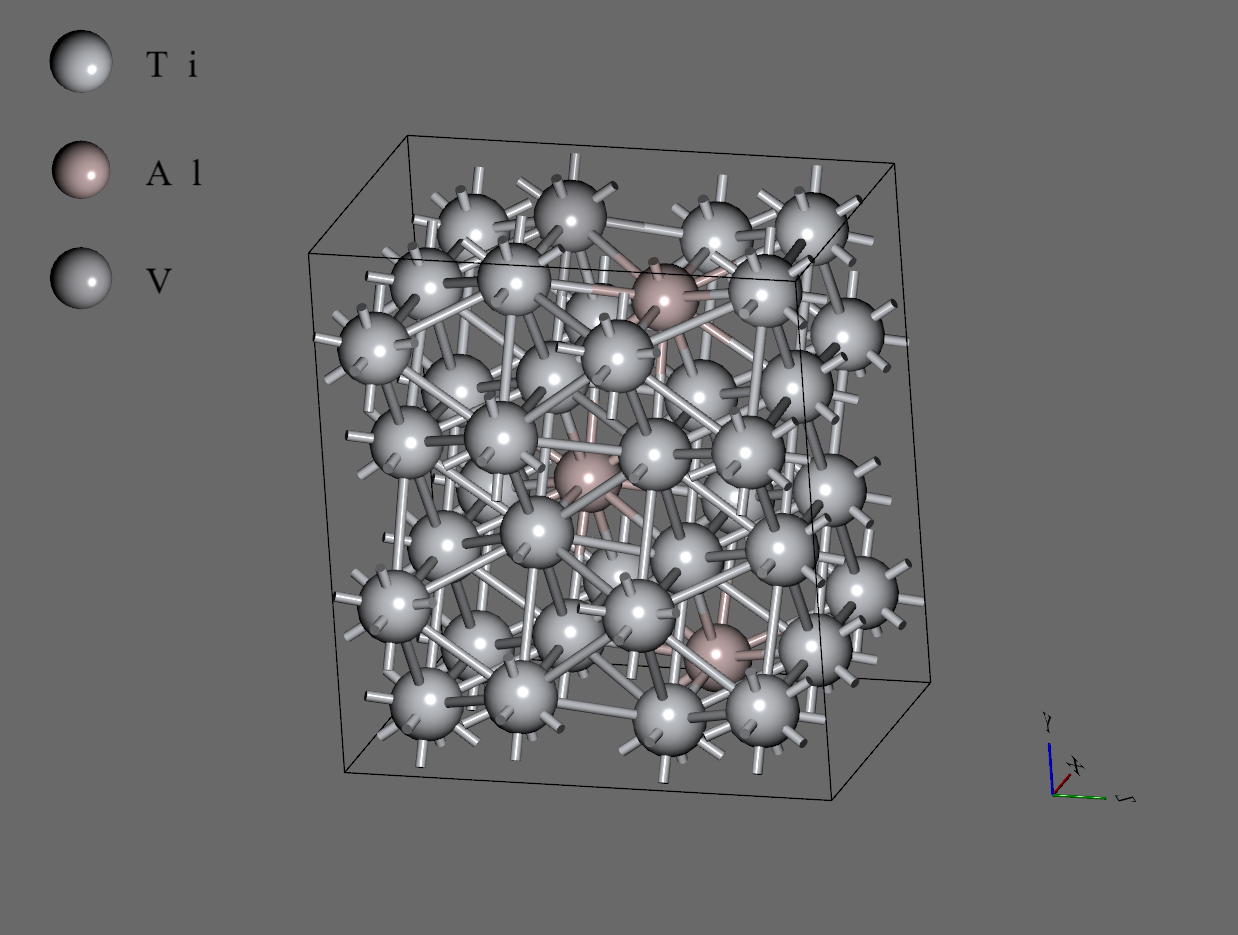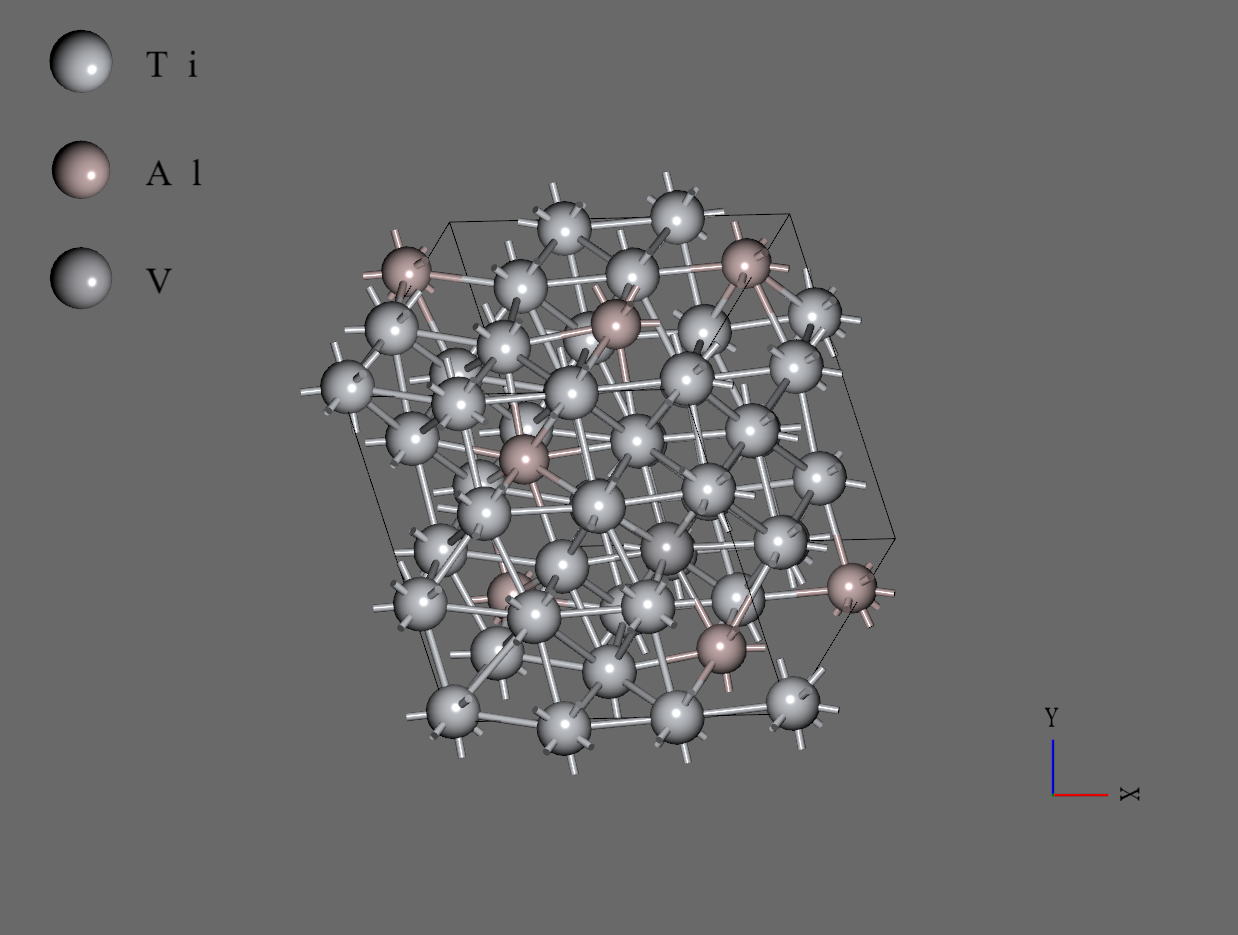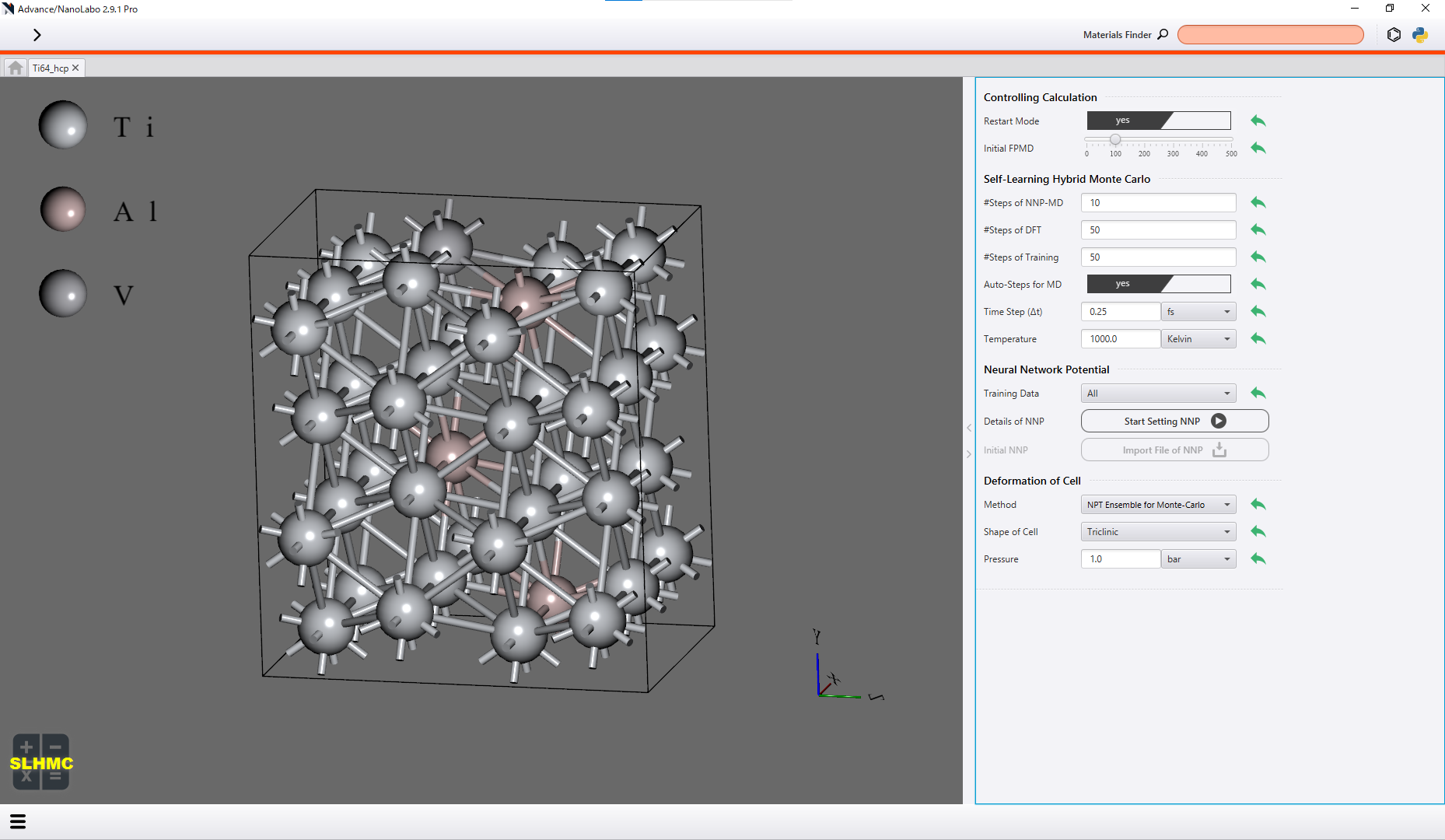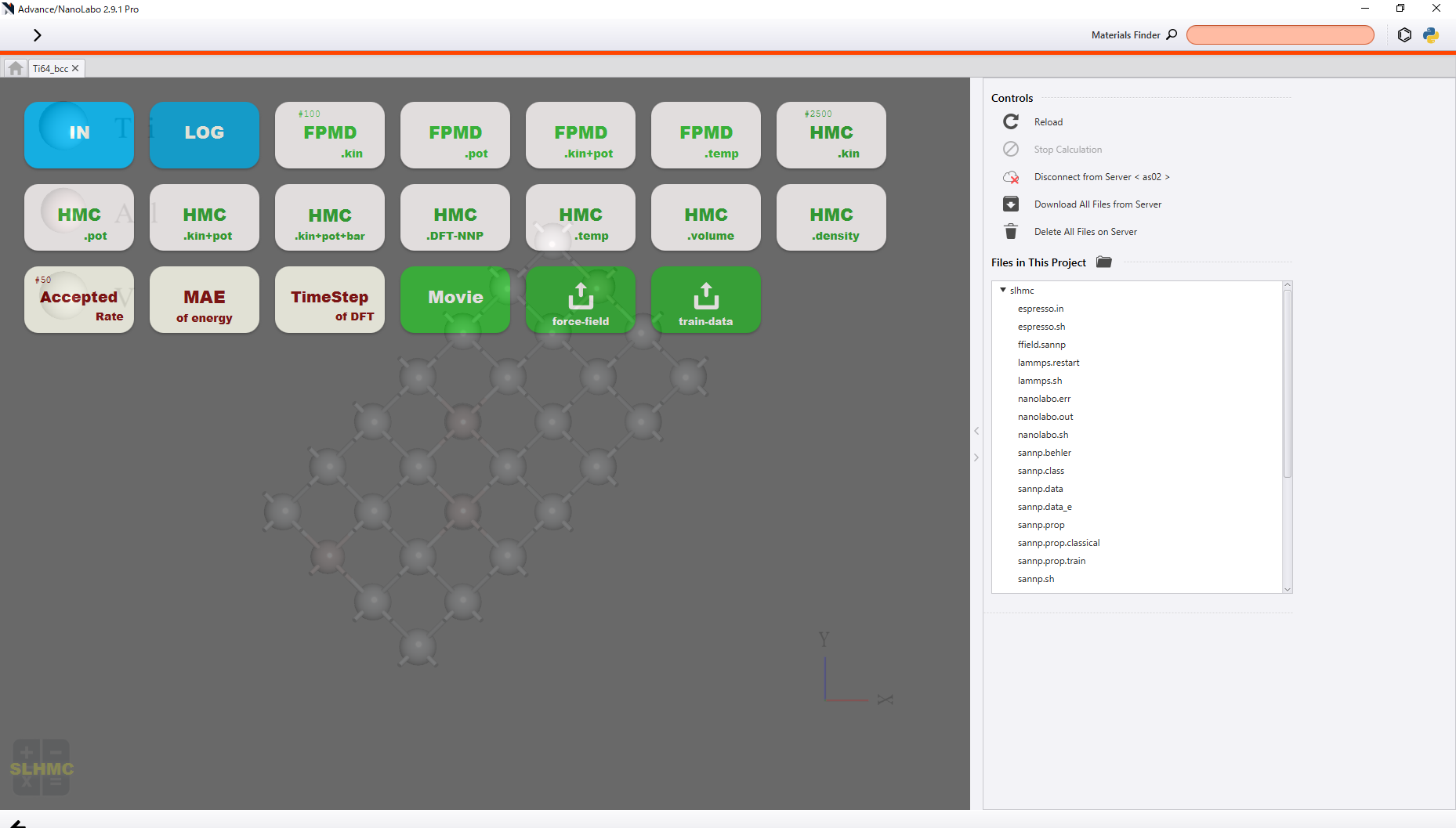Determining the Bulk Modulus of Ti-6Al-4V through Universal Neural Network Potentials#
We determined the bulk modulus of Ti-6Al-4V employing M3GNet and CHGNet, representing universal neural network potentials, and ThreeBodyTB, a general-purpose tight-binding method, subsequently comparing the outcomes with those derived from first-principles calculations. Furthermore, we executed comparable analyses using the fine-tuned variants of these universal force fields1.
Ti-6Al-4V#
Ti-6Al-4V, an alloy comprising a mass fraction composed of 6% aluminum (Al) and 4% vanadium (V), exhibits a composite structure of hcp (hexagonal close-packed) and bcc (body-centered cubic). Its extensive application in the aerospace industry and among various industries is attributed to its high strength, corrosion resistance, and facile manufacturability.
Creating calculation models#
In this analysis, we created two distinct models for the Ti-6Al-4V alloy.
We created the hcp structure from mp-46, the CIF (Crystallographic Information File) for the hcp structure of titanium, obtained from the Materials Project. Initially, we transformed the cell type of mp-46 into an orthorhombic lattice and fabricated a 2x2x2 supercell structure. We then replaced a portion of the titanium atoms with aluminum and vanadium in order to attain the desired mass fractions.
Subsequently, we created the bcc structure from mp-73, the CIF for the bcc structure of titanium, obtained from the Materials Project. Initially, we transformed the cell type of mp-73 into a primitive lattice and fabricated a 3x3x3 supercell structure. We then replaced a portion of the titanium atoms with aluminum and vanadium in order to attain the desired mass fractions.
In the final stage, we performed optimization of these aforementioned structures using Quantum ESPRESSO.
 |
 |
|---|---|
| hcp structure of Ti-6Al-4V | bcc structure of Ti-6Al-4V |
Method#
The bulk modulus, denoted as , is mathematically represented as follows, with signifying the system's volume and denoting the pressure.
We computed the bulk modulus employing the aforementioned equation in conjunction with the subsequent method.
-
The lengths of each lattice vector in the computational models were varied, ranging from 98% to 102% of their original dimensions.
-
The pressure of each structure was calculated employing computational tools such as Quantum ESPRESSO, M3GNet, CHGNet, and ThreeBodyTB.
-
The bulk modulus was calculated by leveraging the previously obtained volume/pressure relationship in conjunction with the aforementioned equation.
Results#
The computed outcomes are presented in the subsequent table.

The error rates were determined as relative errors in comparison to the values computed utilizing Quantum ESPRESSO.
In an endeavor to augment the precision of these computations, similar computational analyses were executed employing meticulously optimized neural network potentials, derived from training data synthesized through the Self-Learning Hybrid Monte Carlo method. Presented below are the computational conditions for both hcp and bcc crystal structures in the generation of training data.
- The total count of training iterations amounts to 50.
- For each training session, the quantity of DFT calculation steps executed is 50.
- The temperature was maintained at 1000 Kelvin.
A total of 4329 sets of training data were generated.
 |
|---|
| Computational conditions during the generation of training data. |
 |
|---|
| Export the training datasets from the results display screen. |
The table below delineates the computational outcomes achieved through the application of meticulously fine-tuned force fields.

It is evident that the precision in computing the bcc structure was significantly improved through the employment of fine-tuned neural network potentials.
関連ページ#
- ナノ材料解析統合GUI Advance/NanoLabo
- 解析分野:ナノ・バイオ
- 産業分野:材料・化学
- Advance/NanoLabo Product Information
- Advance/NanoLabo Documentation
-
For additional details on our Specialized Fine Tuning Services, we invite you to visit the following webpage at https://www.advancesoft.jp/download/90nanolabo_gnnft/ ↩